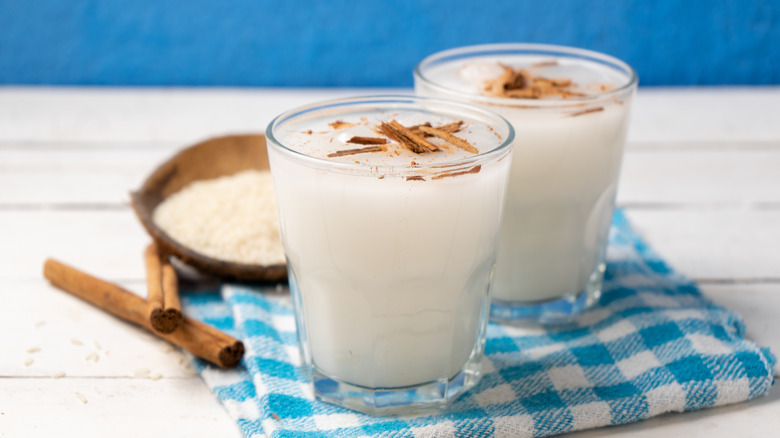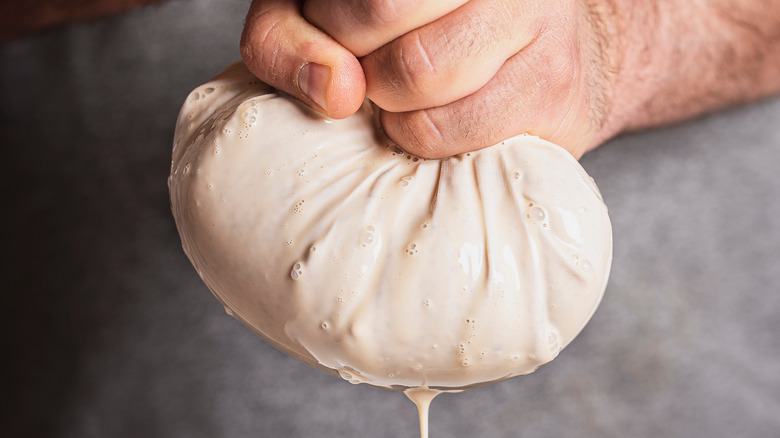What's Really In Horchata?
Creamy, slightly sweet, and refreshing, horchata is the perfect drink to accompany hot and spicy foods. Although often associated in the U.S. with Mexican aguas frescas, Serious Eats explains the beverage is consumed across four continents, each with a regional variation. Horchata's popularization through Latin America stems from Spanish colonization, where it's still famously brewed in Valencia using tiger nuts (via HuffPost).
A tuber, tiger nuts are more closely related to sweet potatoes than almonds. Much like Mexican aguas frescas, Valencian horchata is served from street stalls around the city, ladled into serving cups on the go (via Serious Eats). The city showcases its horchata heritage with pride — there's a Horchata Museum and even a street named after the city's signature drink, Avinguda de l'Orxata.
Yet sifting through the drink's milky origins takes us even further back, to Africa. The "Oxford Companion to Sugar and Sweets" explains tiger nuts were introduced to Spain by way of North Africa, alongside classic horchata preparation techniques. Such intercontinental journeys reveal the drink's storied past ... and explain its various ingredients.
Horchata's ingredients vary depending on location
Horchata's interpretations are seemingly endless; the Latin Post shares different nuts, spices, and liquid bases are used worldwide. In Puerto Rico, there is a variation on the beverage called horchata de ajonjolí, which is made with toasted sesame seeds. Meanwhile, El Salvadorians use the seeds of the morro, a culturally significant tree found throughout the country, per the Washington Post. The most widespread North American version, found bubbling in drink dispensers or ladled from large jars, is rice-based. Ubiquitous throughout Guatemala, Mexico, and the U.S., this horchata is the one you're likely to find at your local taqueria.
All horchata varieties are brewed through a similarly straightforward process: uncooked nuts and spices (typically cinnamon) are left for an overnight soak. After blending (before or after the soak), the ingredients are squeezed through a cloth, and sweeteners such as condensed milk or sugar are added, per HuffPost and Serious Eats.
The "Oxford Companion to Sugar and Sweets" shares most traditional horchatas are dairy-free and made with cold water rather than milk. However, if you're vegan or have a dairy intolerance, it's wise to ask before you sip — milk is sometimes used to create a richer, thicker texture.
There really are no limitations when it comes to horchata. No one will stop you from (and we heartily endorse) creating a boozy variation, like this cocktail made with tequila reposado, crema de mezcal, and — of course — horchata. Refreshing and tasty, it turns out the long history and diverse ingredients that go into this drink are also very cool.

